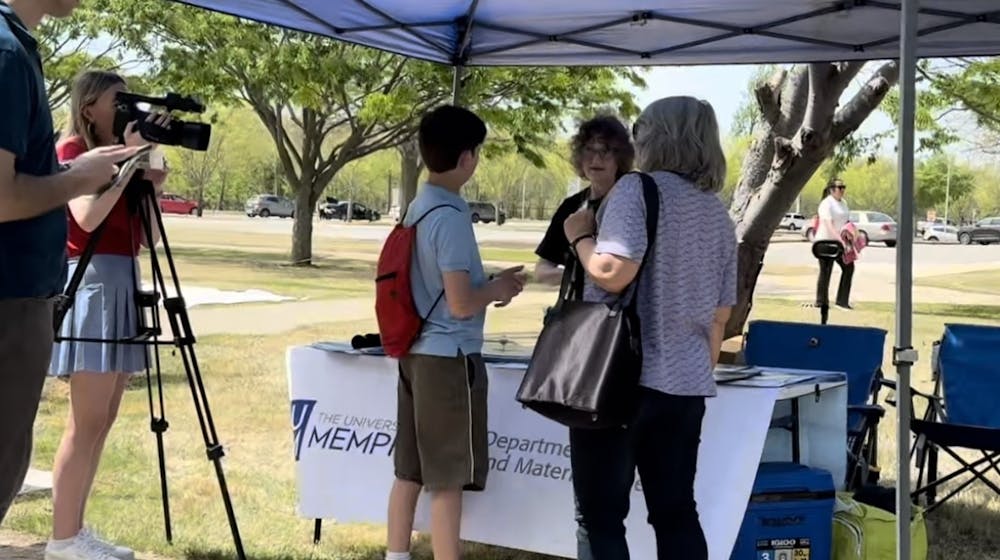Above: Students at the University of Memphis view eclipse through specialized telescope, provided by the Department of Physics and Materials Science, at Student Plaza. Photo credit to University of Memphis.
If you stay in the same location on Earth your whole life, you will see two or three major solar eclipses during your lifetime. It has been estimated that only about one in every 10,000 people will see a total solar eclipse in their lifetime. These are two interesting facts about solar eclipses, but what exactly is an eclipse, and what does it mean?
There are two major types of eclipses visible from Earth: lunar and solar. For one to occur, the Earth, sun and moon must all be lined up so that either the shadow of the moon lands on Earth (a solar eclipse) or the shadow of the Earth lands on the moon (a lunar eclipse). When viewing an eclipse, those who are in the path of the moon’s shadow will see the sun darken as the moon partially blocks the sun’s light from their vantage point. Those directly under the moon’s shadow—in the path of totality— will experience a total solar eclipse, with the day becoming as dark as night for a few minutes.
On April 8, 2024, Memphians had the opportunity to see a partial eclipse, an opportunity that will not come again for another 20 years.
Dr. Ben Keller, an assistant professor at the University of Memphis and a numerical astrophysicist, helped set up an event in the Student Plaza for students and faculty to view the eclipse. Eclipse glasses were handed out to safely view the eclipse’s progress.A telescope with a special filter and kits for students to make a camera obscura were also available. Organizers report a student turnout of a couple hundred.
“We got about 98% percent totality here in Memphis,” said Keller.
Because Memphis only got 98% totality, the sky did not get completely dark as it would during a total eclipse.
“I think the thing that I take away from it is that it is amazing that we can understand the universe well enough to predict something like an eclipse thousands of years into the future,” Keller said.
The methods for predicting eclipses are ancient, dating back 3,000 years ago. One of the oldest pieces of clockwork machinery used to predict astronomical positions and eclipses decades in advance is a piece of rusted bronze called the Antikythera mechanism. This device was created in the 2nd century BC.
UofM associate instructor of teaching Joanne Rhodes, traveled to Arkansas State University in Jonesboro for the 100 percent totality viewing of the eclipse. There, she set up a booth with a model showing how an eclipse works.
Although, in the beginning, Rhodes was occupied with teaching people about the eclipse, she was equally passionate about experiencing the cosmic event herself.
“When it was time for the total eclipse, I quit the booth and just focused on it,” Rhodes said.
Rhodes believes that the ideal place to be fully immersed in viewing the eclipse is out in the wild. In Jonesboro, it got dark enough to where you could see Venus and Jupiter on either side of the sun. The totality lasted for 2 minutes and 15 seconds.

Above: Eclipse as seen in Jonesboro, AR within path of 100 percent totality. Photo credit to Stephanie Vetter.
“You can talk about the eclipse to anyone. It is important because it reminds people that we are all on the same planet,” said Rhodes.






